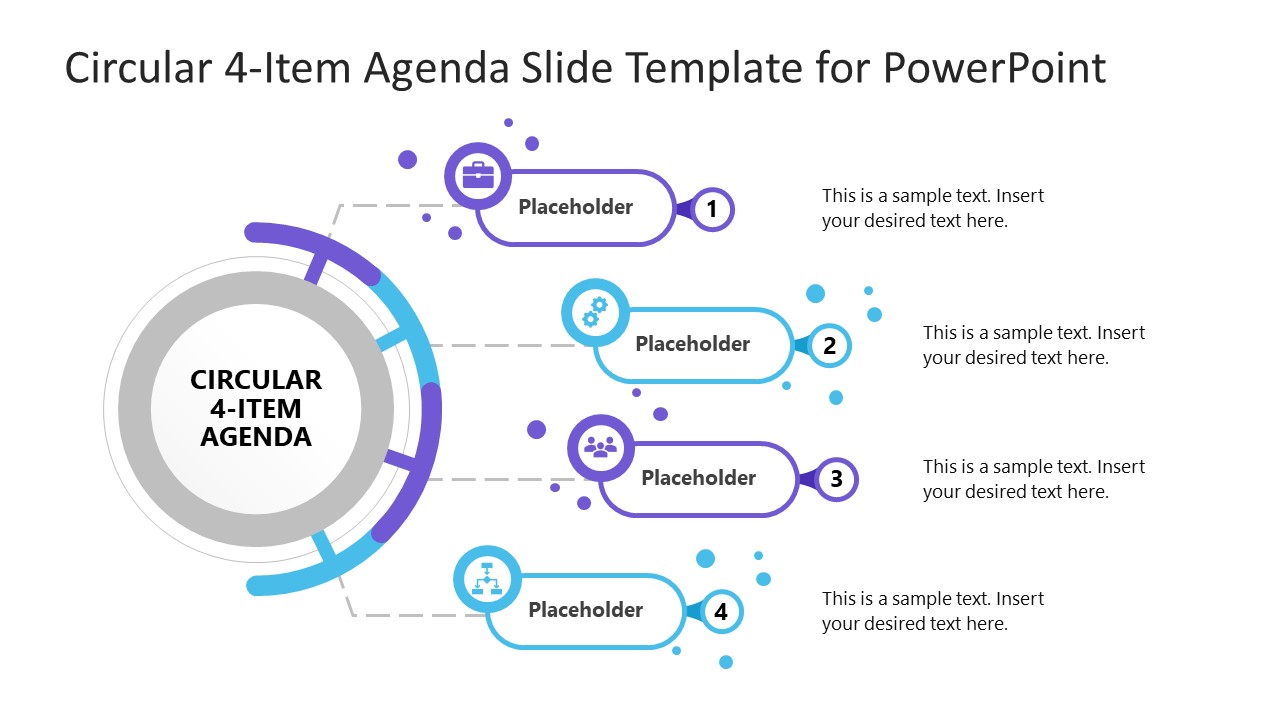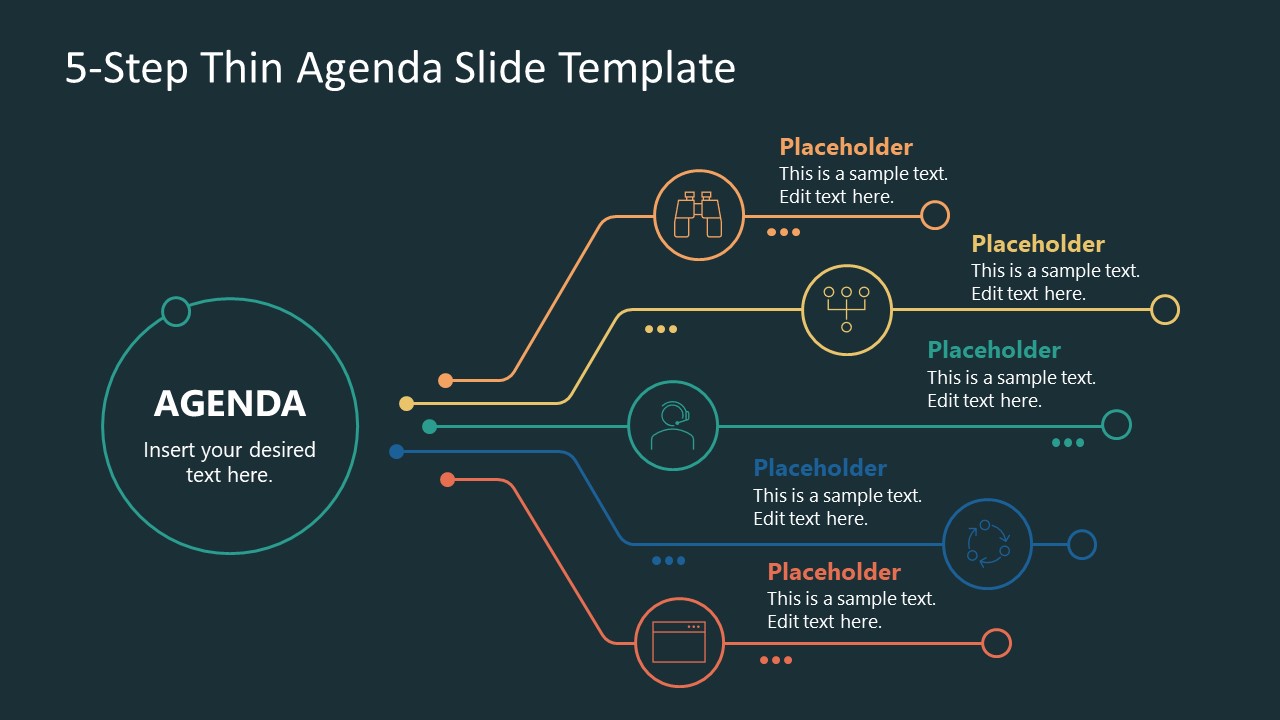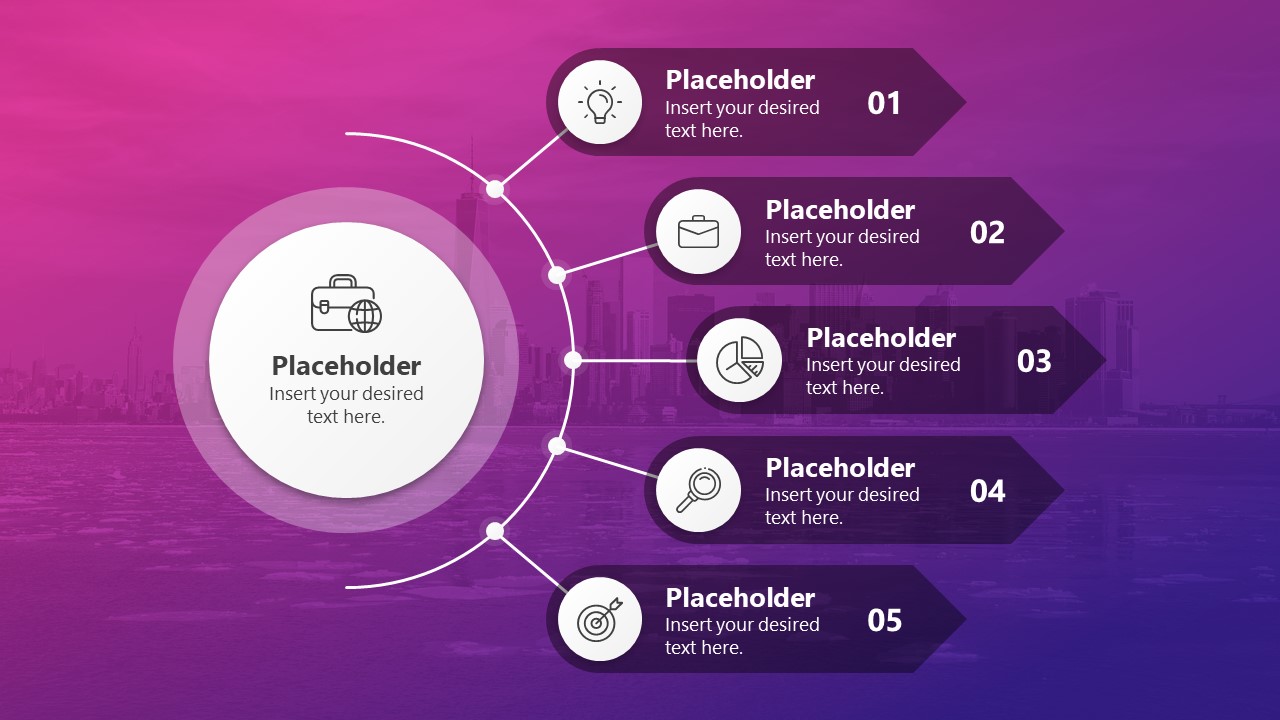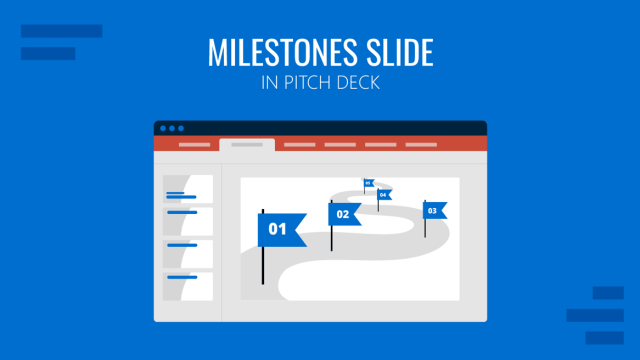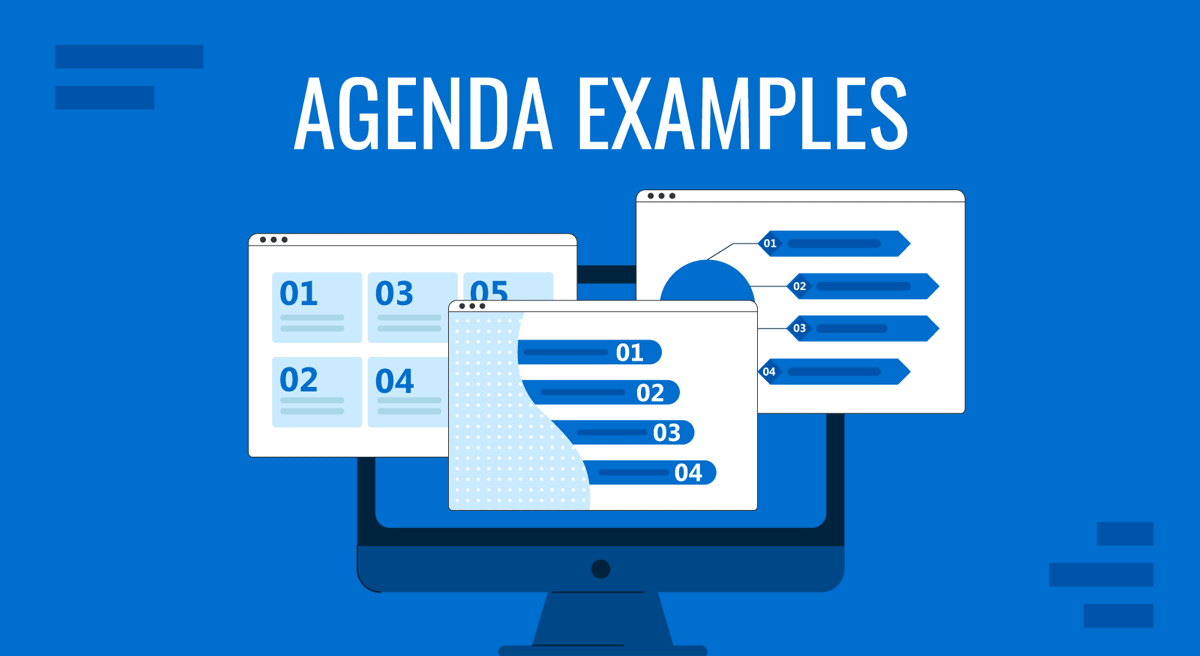
An agenda is essential for any meeting’s success. It helps clarify objectives, set expectations, and keep discussions on track. Without an agenda, meetings often lose focus, wasting time and causing unproductive discussions.
In this article, we’ll explore how to create compelling agendas using different meeting agenda formats and templates, with specific examples and instructions on how to write an agenda for a meeting. Additionally, we’ll discuss the difference between an agenda slide and a table of contents slide in PowerPoint presentations, highlighting how to make both functional and engaging.
Table of Contents
- What is a Meeting Agenda?
- What is a Meeting Agenda Template?
- Why Use a Meeting Agenda?
- Agenda Slide vs. Table of Contents Slide
- Which Elements Make a Meeting Agenda?
- How to Write an Agenda for a Meeting
- How to Link Agenda Slide to PowerPoint Sections
- Best Meeting Agenda Templates
- FAQs
- Conclusion
What is a Meeting Agenda?
A meeting agenda is a structured outline of topics and activities planned for discussion in a meeting. It serves as a roadmap, guiding participants through the session by clearly listing items to be covered, the order in which they will be addressed, and the estimated time allocated to each. Using a meeting agenda template or meeting agenda format helps organizers structure the session effectively and keeps discussions focused on the objectives.
What is a Meeting Agenda Template?
A meeting agenda template is a pre-designed document or PPT slide that provides a structured framework for creating meeting agendas. It simplifies the process of planning a meeting by offering a standardized meeting agenda format that can be adapted to various meeting types, ensuring that all essential details are covered. A meeting agenda template typically includes sections for the meeting title, date, time, location, list of participants, and a breakdown of agenda items with allocated time slots.
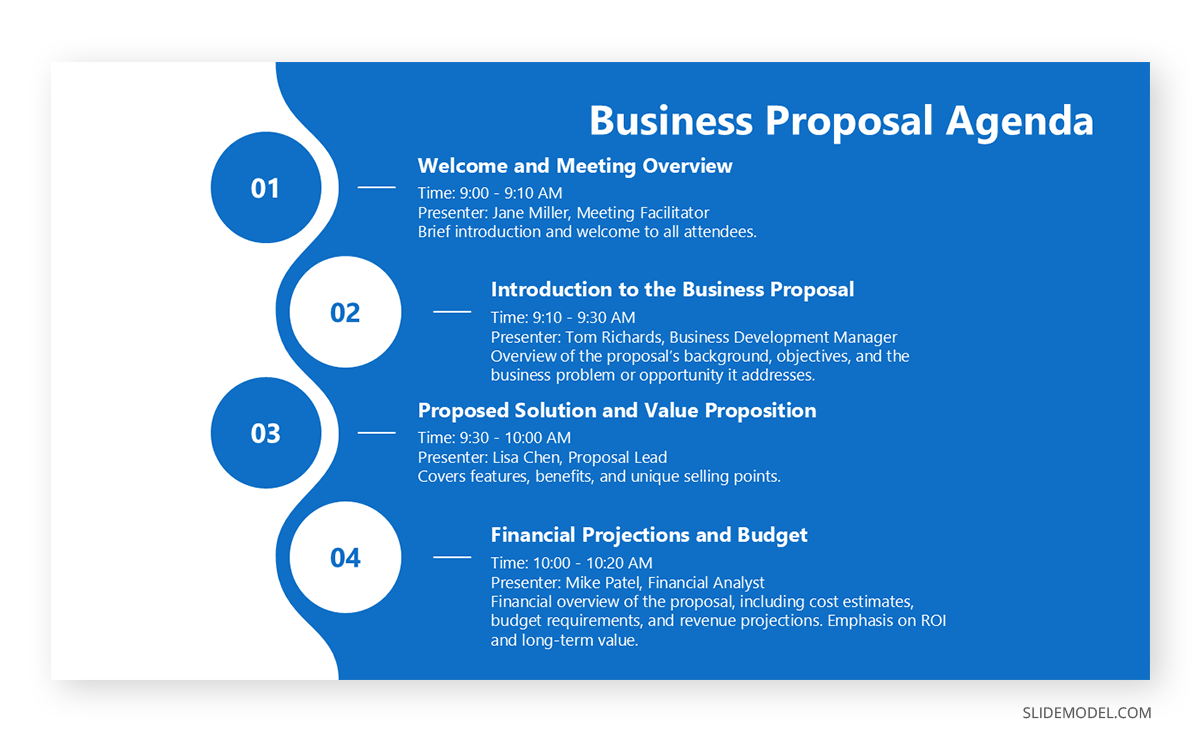
This PowerPoint template acts as a guide for organizing and prioritizing discussion topics, specifying who will present each item, and including any necessary pre-reading or supporting documents. Using a template ensures that nothing critical is overlooked and helps establish consistency across meetings. Meeting agenda templates can be tailored to fit specific needs, whether for weekly team check-ins, project updates, or strategic planning sessions.
Why Use a Meeting Agenda?
A meeting agenda is essential for ensuring that discussions remain organized, focused, and aligned with specific objectives. Without a structured agenda, meetings often lose direction, leading to unproductive discussions and wasted time. The agenda clarifies all participants, offering a clear structure that guides the meeting from one topic to the next. This structure allows attendees to understand the goals and priorities of the meeting, which fosters a more engaged and purposeful discussion.
Time management is another key benefit of a meeting agenda. By assigning specific time slots to each topic, an agenda helps prevent discussions from running over, ensures that all items are covered within the allotted timeframe, and respects participants’ schedules.
Sharing the agenda beforehand allows attendees to prepare relevant information, questions, or materials, enhancing the depth and efficiency of the meeting. When specific agenda items are assigned to particular individuals, this also increases accountability, encouraging active participation from each attendee.
In addition, a meeting agenda acts as a record of the discussion topics and decisions made, which can be valuable for tracking progress and identifying action items. Ultimately, a well-structured agenda is a critical tool for creating a focused, time-efficient, and goal-driven meeting environment.
Agenda Slide vs. Table of Contents Slide
An agenda slide and a table of contents slide serve different roles in a presentation, although they share similarities in guiding the audience through content. An agenda slide provides a concise overview of topics covered within the meeting or presentation, often placed near the beginning to outline key points. Its purpose is to give attendees a quick look at the structure and flow of the discussion, emphasizing specific topics and the order they’ll follow.
The agenda slide typically presents only the main sections, each with a short description and often a time allocation, which is particularly helpful for meetings with time-bound segments. We recommend you our article on how to add sections to PowerPoint to learn more about the relationship between the agenda slide and different parts of your slide deck.

In contrast, a table of contents slide is more comprehensive, usually detailing every section or chapter within a document or in-depth presentation. This slide is best suited for formal presentations, such as project proposals, where breaking down information into detailed subsections improves clarity. A table of contents PowerPoint template may also appear in documents that are revisited often or referred to over time. Check our article on how to create a table of contents in PowerPoint to get quality insights on optimizing this kind of slides.
Which Elements Make a Meeting Agenda?
Like any other structured slide type, a meeting agenda requires a specific set of components.
Title: The slide usually starts with a clear title, such as “Meeting Agenda” or “Agenda,” to indicate its purpose.
Date and Time: Including the meeting date and time provides context and reinforces when the agenda is relevant. This can be helpful if the slide is revisited later as a reference.
Agenda Topics: The main section lists each agenda item or topic in the order they will be discussed. Each topic should be concise and descriptive enough to provide a clear idea of what will be covered.
Time Allocations: Adding an estimated time for each item allows participants to understand the meeting’s pacing and helps manage discussions efficiently. It also sets expectations on how long each topic should take.
Presenter or Owner: Including the names of presenters or topic owners indicates who will lead each section, which helps with accountability and preparation.
Icons or Visual Cues: Many agenda slides incorporate icons or simple visuals next to each item, adding clarity and visual interest, which can improve engagement and understanding.
How to Write an Agenda for a Meeting
Writing an effective agenda requires a systematic approach, starting with defining the meeting’s main objectives. A clear purpose helps prioritize topics and structure the flow. Follow these steps to create an agenda that aligns with your goals:
- Define Your Objectives: Identify the meeting’s purpose, whether it’s for project updates, brainstorming, or decision-making.
- List Priority Topics: Prioritize items based on importance to ensure key issues are discussed first.
- Assign Timeframes and Roles: Allocate a specific amount of time to each topic and assign a lead for each item to ensure accountability.
- Choose a Format: Decide whether a formal structure or a more flexible list is best suited. Meeting agenda formats range from basic bullet lists to detailed tables.
- Distribute in Advance: Send the agenda to participants beforehand so they can prepare.
A meeting agenda example might include sections like Introduction, Key Updates, and Action Steps, each with time allocations. This approach provides structure without overwhelming participants, promoting efficiency and engagement during the meeting.
How to Link Agenda Slide to PowerPoint Sections
A useful feature in PowerPoint is linking agenda items directly to sections within the presentation. Here’s a step-by-step guide:
- Create Sections in PowerPoint: Go to the Home tab and select Add Section to organize slides.
- Link Agenda Items: On the agenda slide, highlight text or shapes, click Insert Hyperlink, and select Place in This Document. Link each agenda item to its relevant section.
This feature is beneficial when using Table of Contents PowerPoint templates or similar Google Slides templates as it provides easy access to each section, allowing for seamless navigation. Hyperlinked agendas work particularly well in complex presentations, as they prevent participants from feeling lost and improve overall meeting flow.
Best Meeting Agenda Templates
If you browsed for the best meeting agenda examples and found stunning graphics, it’s your chance to adapt your meeting agenda to a new aesthetic. Check the list of recommended agenda slide templates by SlideModel. All designs are compatible with PowerPoint, Google Slides, and Keynote.
FAQs
What’s the difference between an agenda slide and a schedule slide?
An agenda slide lists the main topics or activities for a meeting, often without specific times other than overall time allocations. A schedule slide, on the other hand, includes detailed timings, such as start and end times for each segment, often used for conferences or multi-session events.
How do I assign time slots on an agenda slide?
Determine the total meeting time and prioritize each agenda item by importance. Allocate time for each based on its complexity and importance, leaving a buffer for Q&A or discussion. Displaying these time slots helps keep discussions within set boundaries.
How detailed should an agenda slide be?
An agenda slide should be concise, listing only the main topics or sections. Overloading it with details can overwhelm the audience. Brief descriptions, time allocations, and presenter names should provide enough structure without detracting from clarity.
What are common mistakes to avoid on an agenda slide?
Common mistakes include overloading the slide with text, skipping time allocations, and using too many visual elements, which can distract from the main points. Additionally, failing to follow the order listed on the agenda during the meeting can confuse participants and disrupt the flow.
How can I ensure that my agenda slide keeps the meeting on track?
To keep the meeting on track, allocate realistic time slots for each agenda item and stick to them during the meeting. Remind presenters to be concise and guide discussions back to the agenda if they stray off-topic. This structured approach helps prevent time overruns.
Should I share the agenda slide before the meeting?
Yes, sharing the agenda slide in advance gives participants time to prepare, review necessary materials, and bring relevant questions or insights. It sets expectations and helps everyone come to the meeting ready to contribute effectively.
Can I use an agenda slide for online meetings?
Absolutely. For online meetings, sharing an agenda slide at the beginning helps virtual participants understand the flow and purpose of the meeting. It’s particularly useful in remote settings where structure is essential for managing time and keeping attendees focused.
Conclusion
A well-structured meeting agenda is essential for maximizing productivity and ensuring that discussions remain focused and goal-oriented. By utilizing the right meeting agenda template or meeting agenda format, organizers can streamline the planning process, help participants prepare in advance, and keep the meeting on track. A clearly defined agenda, whether presented in a traditional list format or through a visually engaging agenda slide, supports effective time management and accountability.
Incorporating visual aids, such as icons or color-coded sections, enhances clarity and keeps participants engaged, while features like hyperlinks allow for seamless navigation through content.
